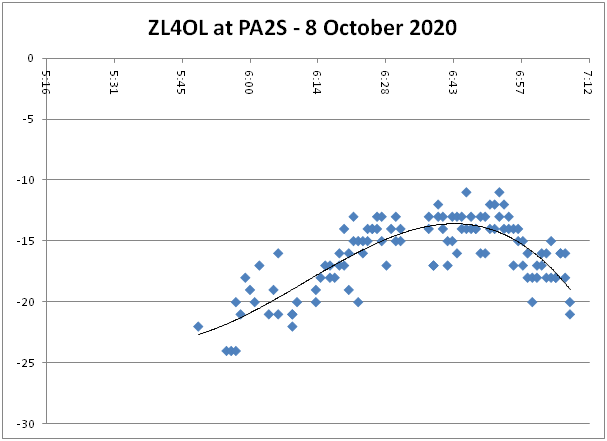Similar to the recent retraction of the permits in New Zealand, the ACMA decision not to support amateur use of the 60 m band in Australia is a slap in the face. Invalid arguments and even secrecy were brought forward to support the decision. Why is 15 kHz of spectrum with only 15 Watts radiated power so important? A huge amount of spectrum is used for governmental applications anyway and is 15 kHz really so crucial?
It is disturbing to read the response of ACMA when asked for monitoring and eventually filing a formal complaint to the ITU regarding Indonesian pirates, that are all over the place and cause a lot of interference. Not to talk about the Chinese radar.
The RASA conducted an intruder watch project in 2018.
Glenn, VK4DU writes: “We submitted detailed reports on the 40m QRM to ACMA and requested they conduct formal monitoring with a view to a report through the ITU system.
ACMA advised at the time that, due to pressure of other work, they were unable to conduct the required monitoring.”.
Come on, if the defense forces are so keen on clean spectrum, this would be on top of the priority list of ACMA.
The reminiscence with the arguments to end the 60 permits in New Zealand is striking.
The arguments held: “(…) Defence’s public submission did not support an allocation, on the basis that: … this frequency band is already experiencing spectrum congestion, which adversely affects critical Defence capabilities. Therefore, Defence cannot accept further increase of spectrum congestion by the introduction of Amateur services. (…)”
The Department of Defence also provided non-public information to the ACMA to further support their position.
With the best of my knowledge, I cannot see why this supposed increase of congestion on a tiny slice of 15 kHz would have any noticeable impact on the Defence capabilities. One would assume that protection against interference would be a very important requirement for equipment and the arguments suggest that this is not the case. It does not make sense. Why are further arguments concealed? Do they exist at all?
This contradiction points to decisions that are not based on facts, but instead on an agenda, that looks to be imposed on governments. It is very hard to believe that we are governed by lunatics without any common sense.
Although we should never give up, the decision shows that amateur radio is less and less regarded as beneficial to the general interest, which is alarming. It should encourage the IARU to invest time in developing a strategy to address the pressure on amateur radio.
For all of us radio amateurs, it is also imperative to seek for added value because only that could change the course of events. Just making (lots of) contacts is of little value, but if we applied the data to conduct research, the same contacts could become meaningful. As an example, together with a group of ZL amateurs, signal reports were collected and were analysed to better understand ionospheric propagation.
Below is an example graph of SNR values, showing a distinct peak just after sunrise in Europe. This peak occurs every day. The time of the peak tracks sunrise times.
So, it is advised to concentrate on other bands and it would be a consideration to focus on a particular band. With the upcoming solar cycle, the higher bands provide many opportunities. Please save your FT8 ALL.TXT files, because they can be useful for analysis. Even just monitoring can be very valuable!

